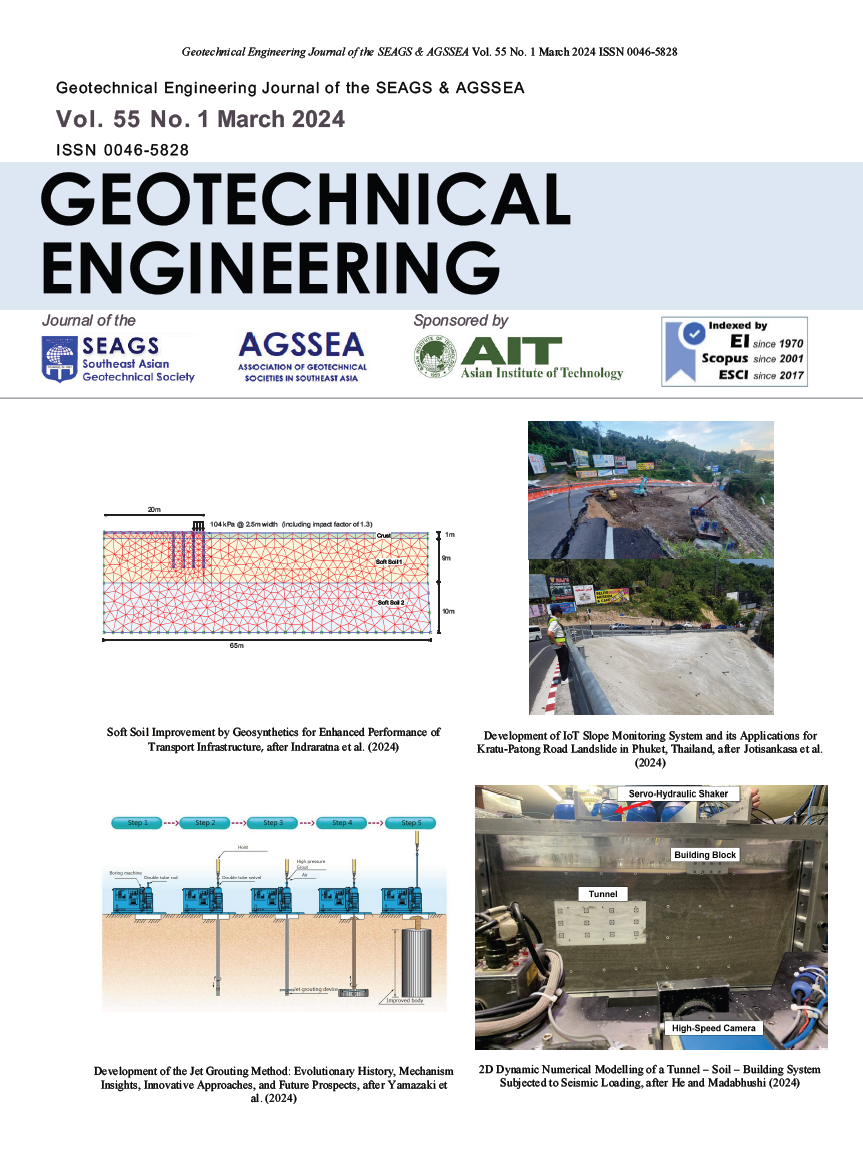Evaluating Bentonite Sludge Suitability for Landfills and Developing a Coefficient of Permeability Prediction Model
Main Article Content
Abstract
Construction in Bangkok, Thailand, often requires bentonite slurry for stabilization during deep foundation and diaphragm wall construction due to this region’s thick, soft clay layers. However, the bentonite slurry creates environmental and logistical challenges after construction as it becomes a waste product. Thus, this study first examined the feasibility of repurposing flocculated bentonite sludge, treated with anionic polyacrylamide from deep foundation construction, for landfill construction. The research compared the physicochemical, swelling, and hydraulic properties of the bentonite sludge with the original bentonite powder, using the free swelling index and consolidation testing. The test results indicated that the microstructure of bentonite sludge, altered by the polyacrylamide, had reduced the swelling and barrier properties compared to the original material. Although unsuitable for the core material of geosynthetic clay liners, bentonite sludge could still be an effective compacted clay liner material with appropriate design and construction. Secondly, this study developed a more rapid method than the consolidation test to estimate permeability values based on the liquid limit and void ratio test results, providing a user-friendly, time-efficient approach. This research identified a sustainable solution for waste management in Bangkok or other similar regions with thick, soft clay layers, as well as offering a practical method for quick permeability estimation in landfill applications.
Article Details

This work is licensed under a Creative Commons Attribution-NonCommercial-NoDerivatives 4.0 International License.
Copyright © 2019 Association of Geotechnical Societies in Southeast Asia (AGSSEA) - Southeast Asian Geotechnical Society (SEAGS).


